15 Best Gardens to Explore in Japan
Japan is known for its beautiful landscape, rich culture, and tradition. Among these traditions, the art of Japanese garden design has stood the test of time and continues to captivate visitors across the globe.
A traditional Japanese garden carries philosophical ideas, aims to replicate natural landscapes on a miniature scale, and to serve as a place of contemplation and meditation. Elements like rocks, water features, moss, pruned trees, and raked gravel are meticulously arranged to represent various aspects of nature. Often associated with Zen Buddhism, these serene spaces offer tranquil settings for quiet reflection.
Best Gardens to Explore in Japan
These beautifully designed gardens are spread all across Japan. Let’s navigate some of the most famous Japanese gardens that have lured tourists worldwide with their unique appeal.
Kenroku-in Garden
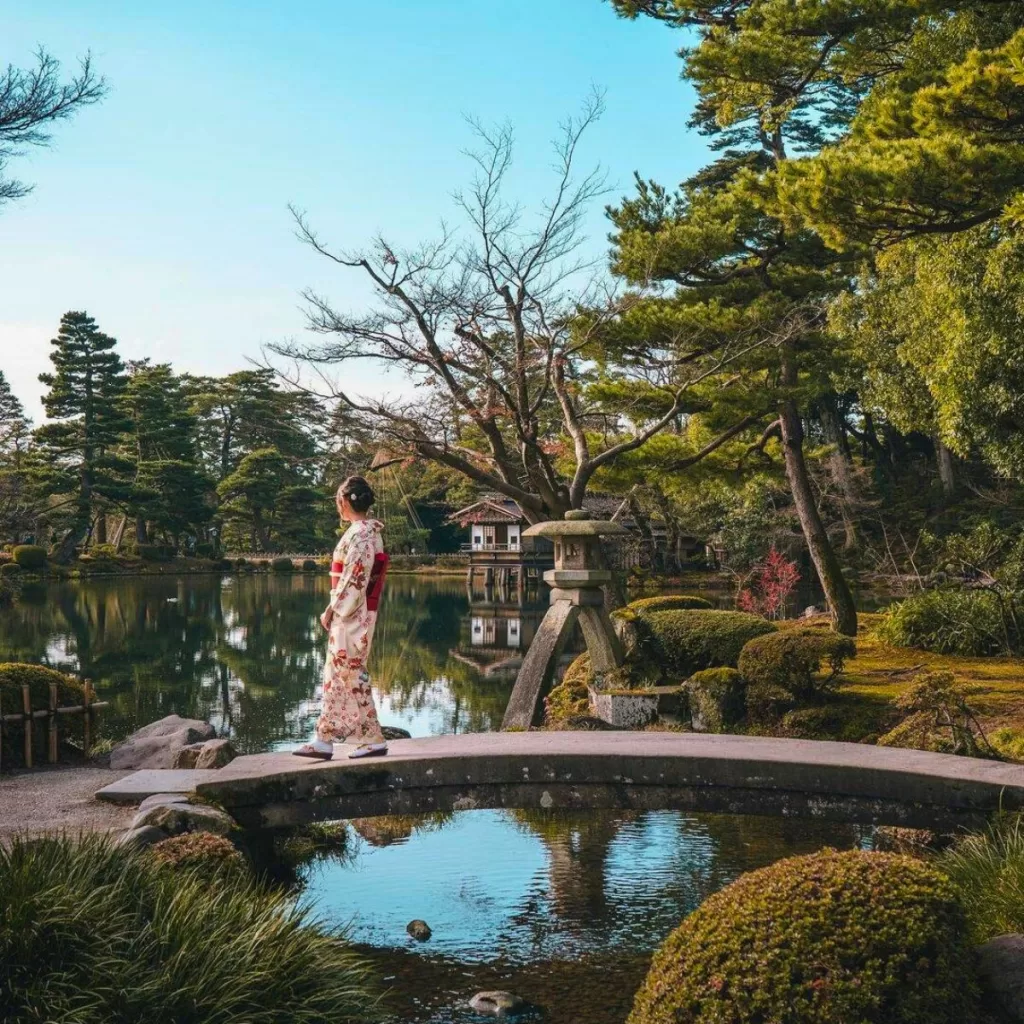
Considered one of Japan’s Three Great Gardens, Kenroku-en in Kanazawa captivates visitors with its landscape of ponds, hills, trees, and flowers. Meaning “garden which combines six characteristics,” encapsulates traditional Japanese gardening in its beautiful design. Walk across bridges and see artistic touches like umbrella-shaped pine trees pruned to protect from snow.
From the Kotoji-toro lantern, admire views of the large central pond filled with koi fish. The historic teahouses throughout the grounds provide scenic spots for sipping matcha green tea and examining refined craftsmanship. Boasting nearly 300 years of history, Kenroku-en demonstrates nature shaped into an idealized form according to Japanese aesthetic sensibilities.
Rikugien Garden
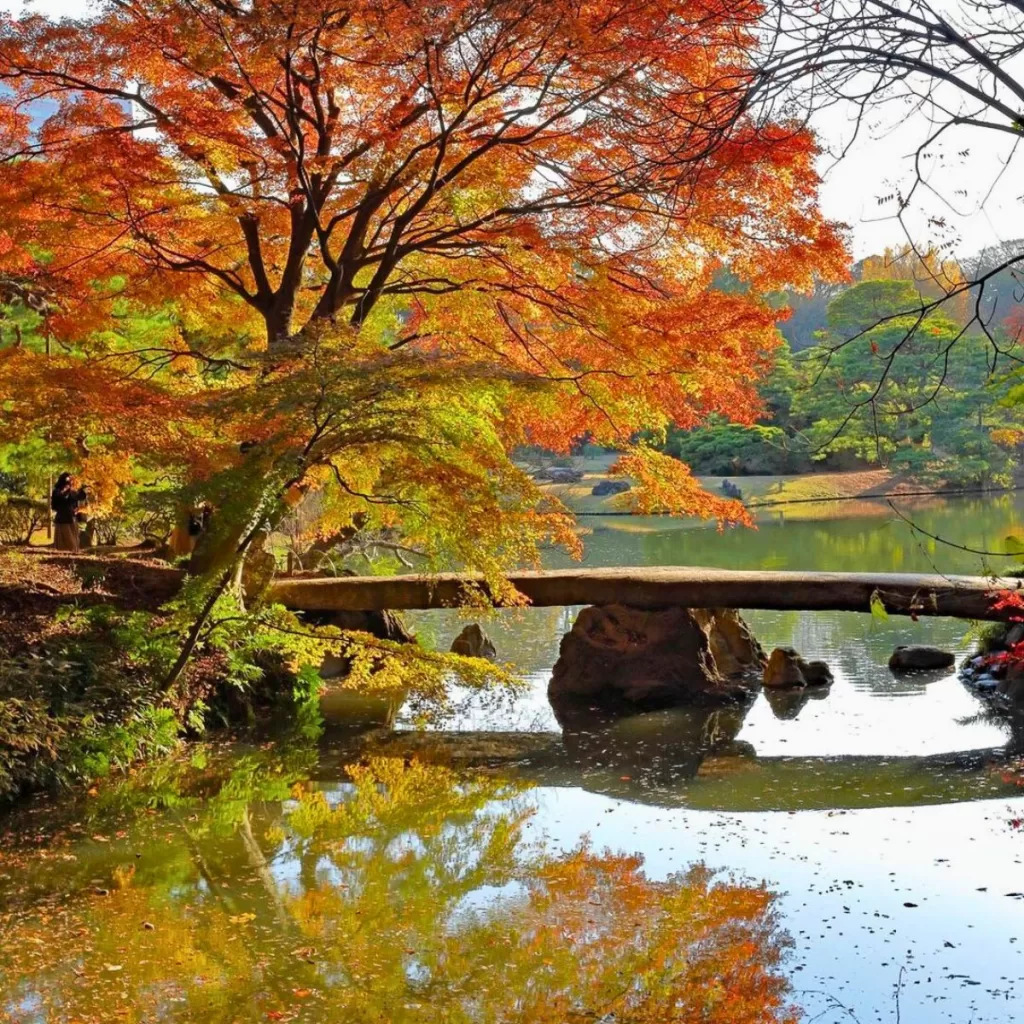
Built to reflect the beauty of Japanese waka poetry, the landscape of Tokyo’s Rikugi-en evokes various inspirational scenes through its scenery. In spring, weeping cherry trees blooming over a hill conjure visions of Mt. Yoshino, the sacred cherry blossom spot. Other recreations include views of famous natural wonders like Kyoto’s Oi River. Stroll along winding paths past maple trees, tranquil ponds, and historic teahouses.
Change perspectives by climbing the small manufactured hills dotted throughout. At night, the garden transforms into a mystical scene illuminated by lanterns. By thoughtfully incorporating symbolism through nature, Rikugien offers a poetic retreat in the city’s heart.
Adachi Museum of Art Garden
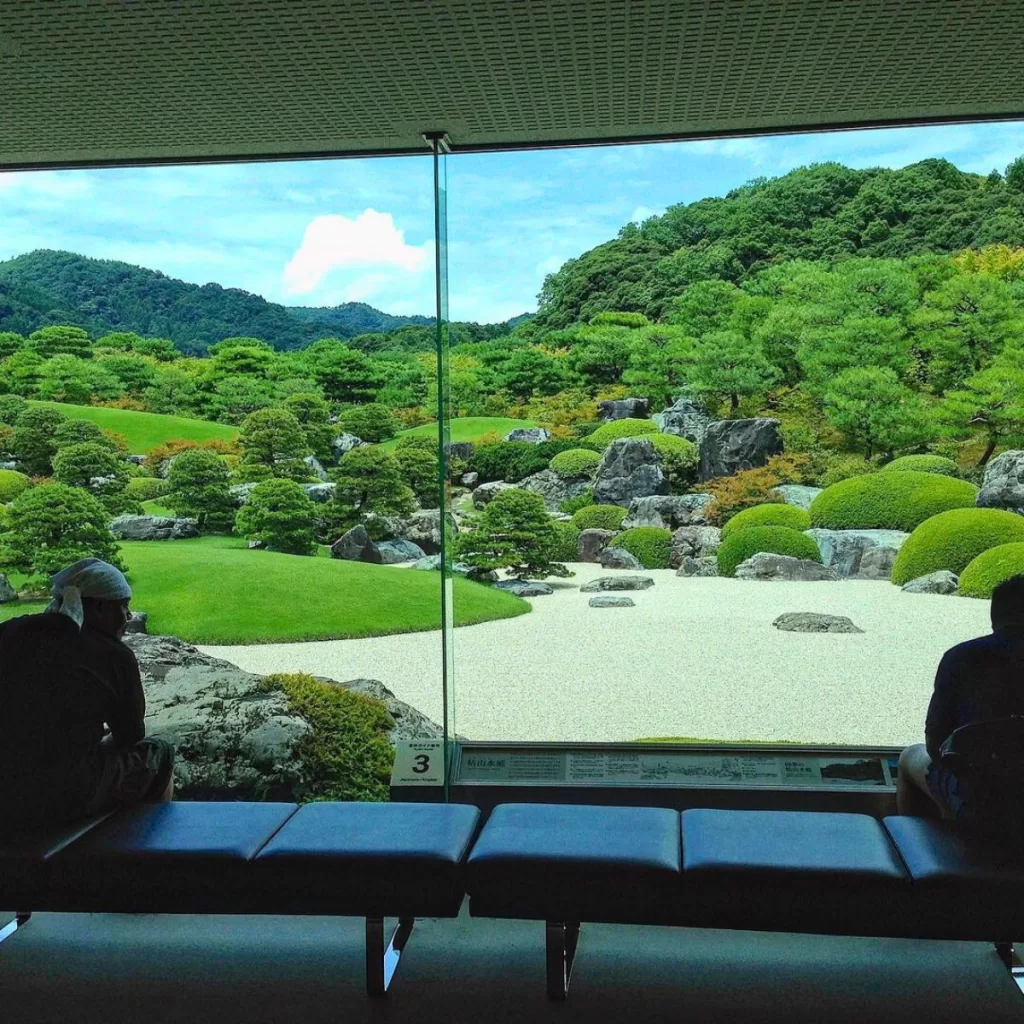
Considered one of Japan’s finest gardens, the Adachi Museum of Art Garden combines landscaped environments with scenic art harmoniously. Meticulously cared-for botanical collections include bonsai, azaleas, and over 1,000 iris species that bloom vibrantly in late spring.
Each turn along the garden trails reveals a new breathtaking vista, whether of vibrant red maple leaves or a tranquil Zen rock garden. Care was taken to perfectly frame and complement the contemporary Japanese paintings in the museum’s buildings peering over the landscapes. Together with the artwork, the garden provides a sensory experience engaging sight, sound, and smell amidst natural beauty.
Korakuen Garden
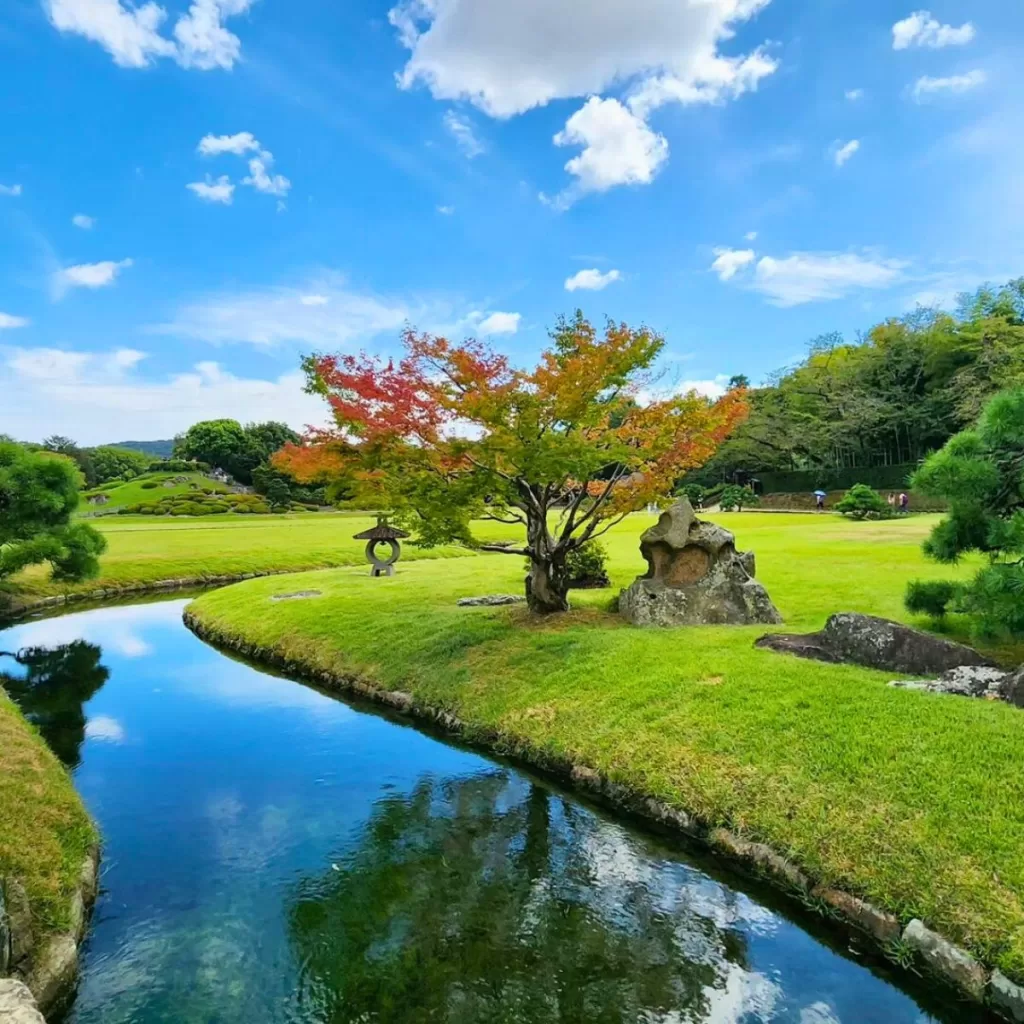
Built in Okayama in 1700, Korakuen Garden delights visitors with its miniature recreations of Japan’s scenic wonders. To craft an idyllic microcosm, the garden is designed around three principles – recreation, spaciousness, and seclusion. Stroll around the large pond to see miniaturized versions of famed sites like Itsukushima Shrine rising from the waters.
Other creative touches include plantings of maple and cherry trees, evoking the vibrant colors of Mount Yoshino. Historic teahouses throughout the grounds provide perfect vantage points over the lawns, streams, and plum orchards. Korakuen packs scenic variety into a compact city garden by bringing together representations of inspiring landscapes across Japan.
Sankeien Garden

Located in Yokohama, Sankeien Garden houses beautifully integrated natural scenery and historic structures. The sprawling grounds feature walking paths winding through lush forests, past ponds, and across rustic bridges. Scattered throughout are various cultural relics like a three-story pagoda and manor house, carefully preserved or relocated here from across Japan.
Seasonal flower plantings transform the inner garden into a vision of vibrant colors throughout the year. With its harmonious combination of natural beauty and historic architecture from different eras, Sankeien offers a distinctive experience to savor culture and nature.
Kairakuen Garden
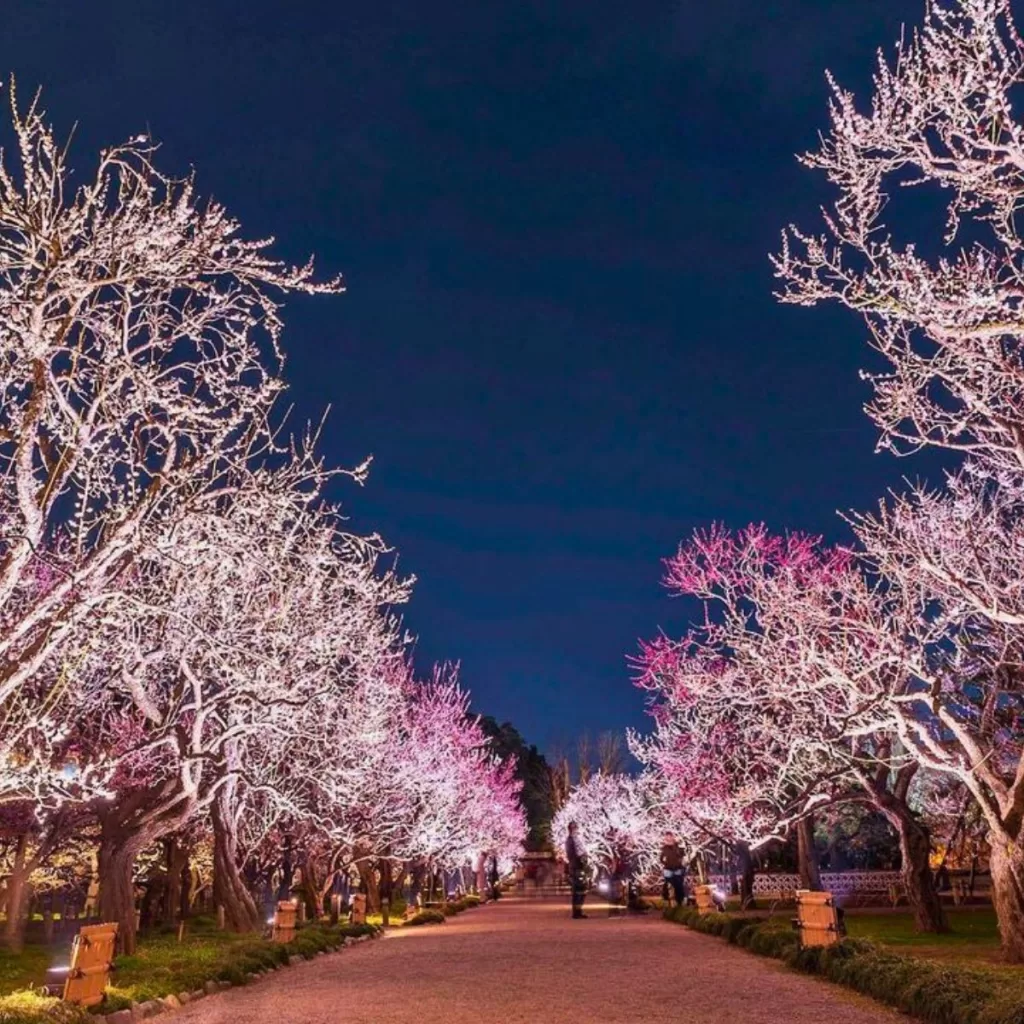
Located in Mito near Tokyo, Kairakuen distinguishes itself as one of the Three Great Gardens of Japan with its plum blossoms. In early spring, over 100 plum tree varieties burst into snowy white and pink hues across the garden – a mesmerizing sight not found elsewhere.
Other seasonal features include cherry blossoms, azaleas, and maple leaves, coloring the landscape throughout the year. Built-in 1841, Kairakuen incorporates strolls along tree-lined paths and pond-side pavilions that look onto vistas carefully composed by Japanese horticulturalists. For unforgettable springtime plum blossom viewing, visiting Kairakuen is a must.
Kenrokuen Garden
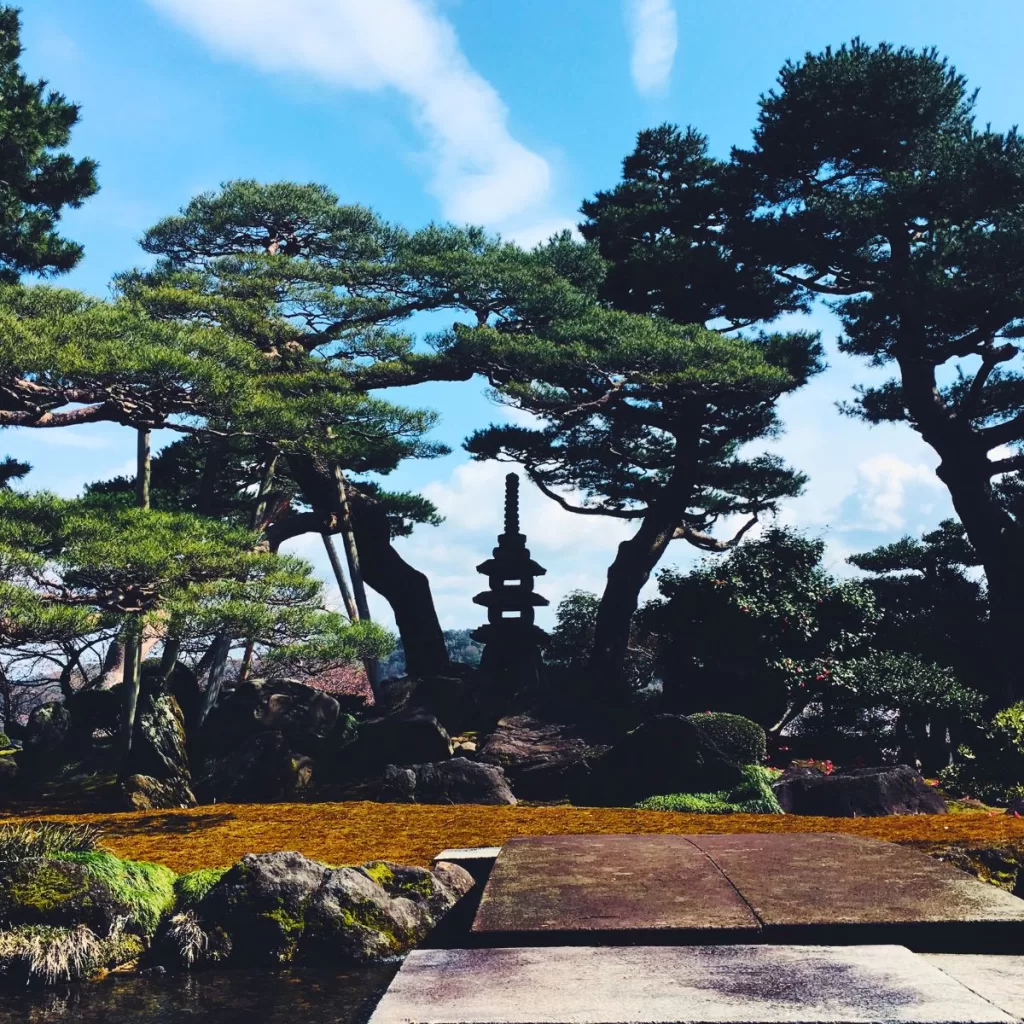
Considered one of Japan’s Three Great Gardens, Kenroku-en in Kanazawa captivates visitors with its landscape of ponds, hills, trees, and flowers. Meaning “garden which combines six characteristics,” it encapsulates traditional Japanese gardening in its beautiful design. Walk across bridges and see artistic touches like umbrella-shaped pine trees pruned to protect from snow.
From the Kotoji-toro lantern, admire views of the large central pond filled with koi fish. The historic teahouses throughout the grounds provide scenic spots for sipping matcha green tea and examining refined craftsmanship. Boasting nearly 300 years of history, Kenroku-en demonstrates nature shaped into an idealized form according to Japanese aesthetic sensibilities.
Koishikawa Korakuen Garden

Established in 1629 in the heart of Tokyo, Koishikawa Korakuen was the prized garden of the Mito clan. Unfolding across the landscape are recreations of famous scenes from Chinese and Japanese literature, materializing in miniature form. Stroll over arched bridges, bamboo groves, and ponds depicting a Chinese river delta scene.
The Tsutenkyo bridge recreates a path overhanging a deep gorge to recreate the precarious planks described in the ancient Chinese work, The Peony Pavilion. Seasonal flowers reflect on the ponds throughout the year, and stone lanterns create an atmosphere. Koishikawa Korakuen exemplifies a classic Japanese garden by infusing cultural and natural symbolism.
Ritsurin Garden
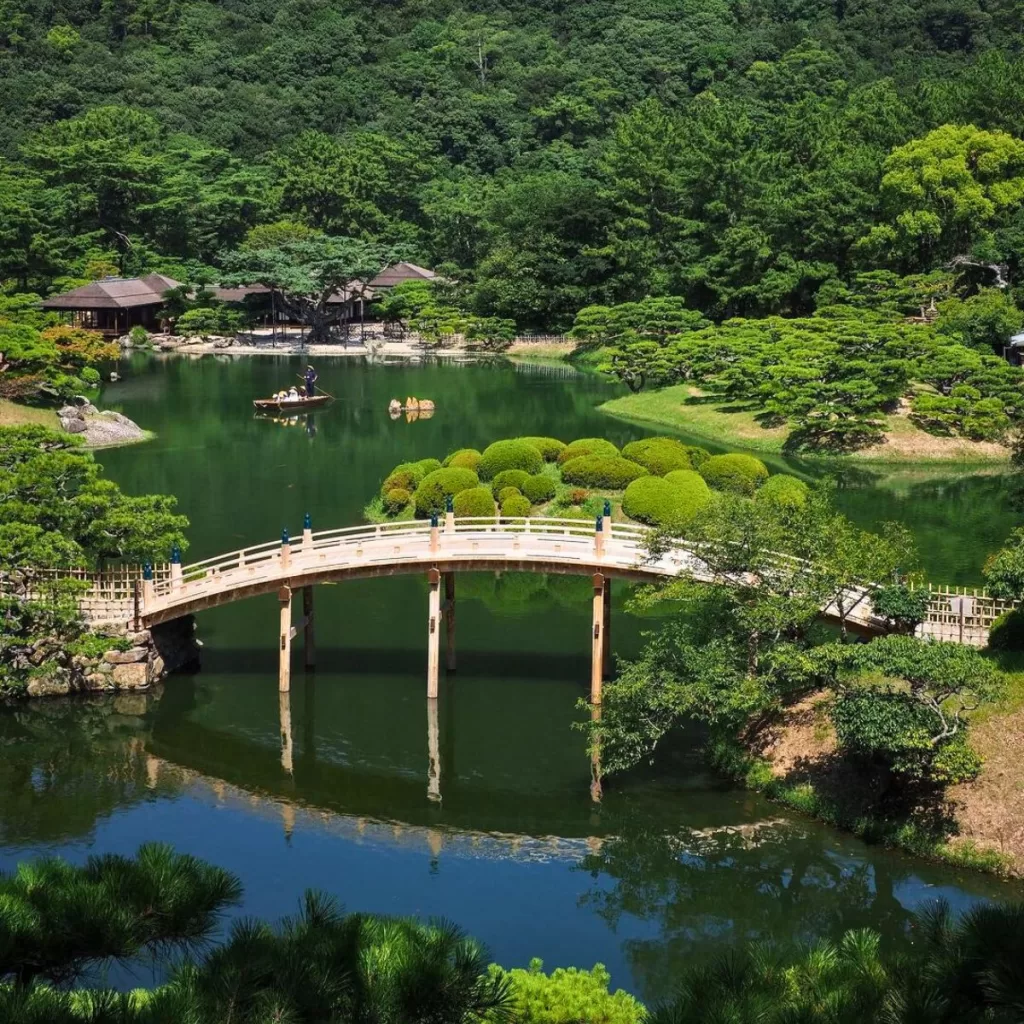
Considered one of Japan’s most beautiful strolling gardens, Ritsurin Koen on Shikoku island took over a century to complete, starting in 1625. Winding paths reveal scenic views around every corner, from pine-covered hills to ornate pavilions set along mirror-like ponds.
The garden’s designers took care to balance both manufactured and naturally shaped landscapes on the 75-acre grounds. Seasonal plantings like plum and cherry blossoms provide evolving color throughout the year.
At night, illuminated pathways and lanterns transform the garden into a serene moonlit landscape. Ritsurin Koen’s harmonious blend of horticulture, architecture, and manipulated nature creates a paradise for peaceful walks.
Ryoanji Temple Rock Garden
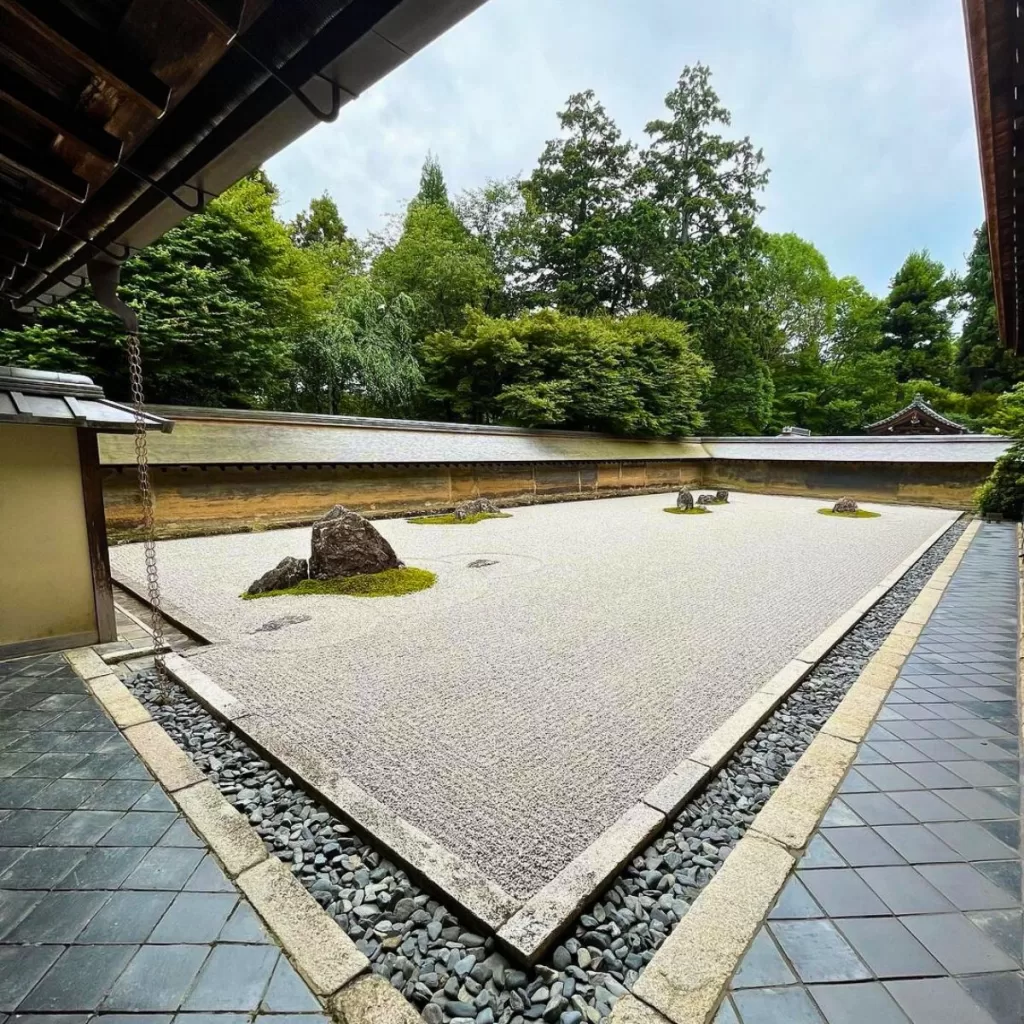
The rock garden of Ryoanji temple in Kyoto has enchanted visitors for centuries as a sublime example of artistic minimalism. Carefully composed of 15 rocks surrounded by raked gravel, the cryptic layout has been pondered over as the embodiment of Zen philosophy. From the veranda, multiple vantage points reveal only 14 of the rock groupings at one time, with the 15th always hidden from sight.
The intentional mystery limits perception, causing self-reflection on one’s incomplete view of the whole. Surrounded by earthen clay walls, the rock garden separates the viewer from nature’s randomness, creating order and focus. In its thought-provoking simplicity, Ryoanji’s contemplative rock garden invites meditation on life’s elusive truths.
Saihoji Moss Garden
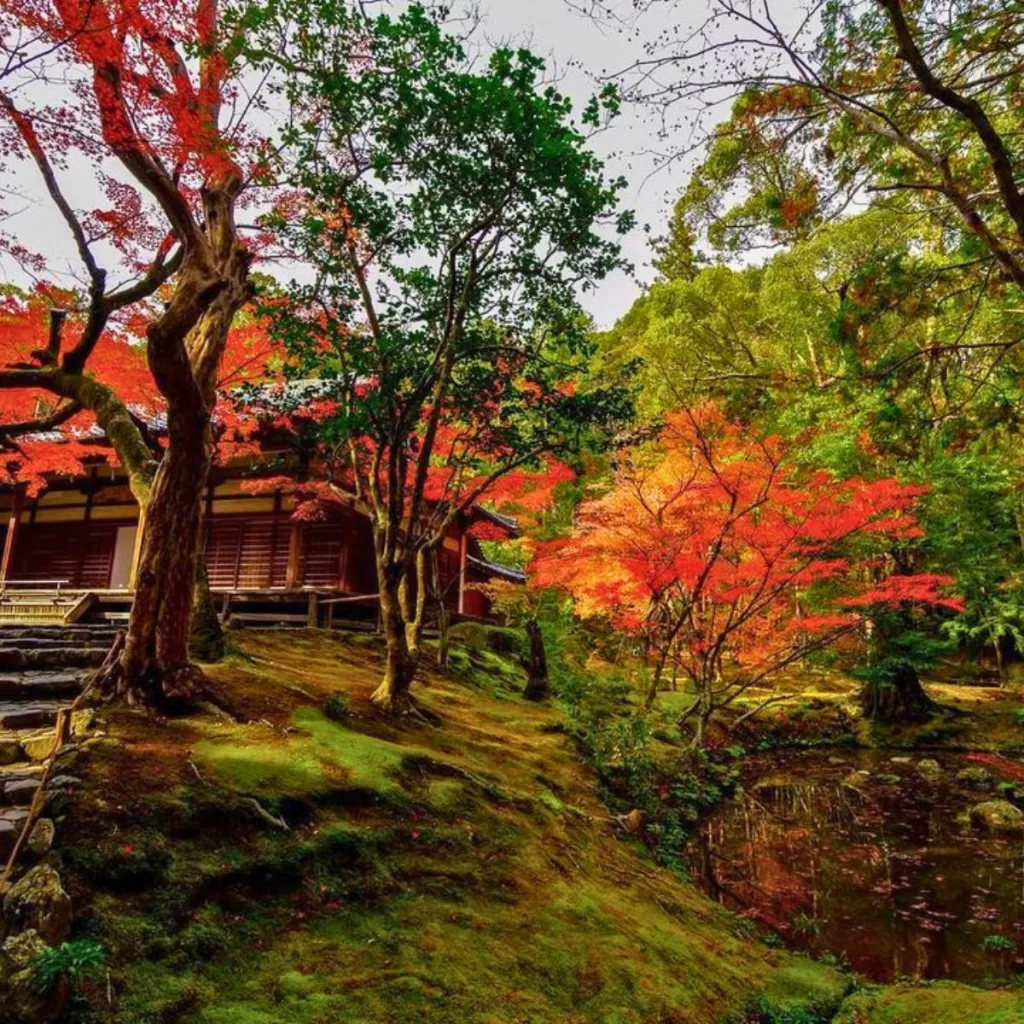
Saihoji, popularly known as Kokedera or “Moss” Temple, harbors one of Japan’s most wondrous gardens behind its walls. After obtaining an entry reservation, visitors sit on moss-covered logs, gazing over a sea of 120 different species blanketing the grounds. Monks first developed this technique in the 13th century to recreate the Buddhist paradise.
Streams, stone bridges, and bamboo groves accentuate the velvety emerald landscape. Annual flooding in June ensures the moss remains lush and vibrant. Contemplative walking paths allow mindful appreciation of nature’s array of textures and vibrant green hues at every step. As an enveloping forest of moss, the Saihoji temple garden provides a magical sensory experience.
Suizenji Jojuen Garden

Modeled after Japan’s iconic Mt. Fuji and surrounding landscape, Suizenji Jojuen immerses visitors in miniaturized natural wonders. Representing Mt. Fuji, an artificial hill rises from the middle of the garden, dotted with miniature torii gates, shrines, and stone lanterns.
Surrounding the scene, small streams, rushing waterfalls, and lush greenery recreate the forests at the base of Mt. Fuji. Built in 1636 in Kumamoto, careful tending over centuries keeps the garden looking like a living diorama of the mountain.
The illusion draws you along circulating paths, across arched bridges, and around clear ponds that reflect the scenes. For an imaginative take on idealized natural scenery, Suizenji Jojuen’s condensed world fascinates visitors.
Gioji Temple Moss Garden

The intimate moss garden of Gioji temple in Dazaifu provides a soothing retreat of soft greens. Built around the temple’s Blood Pond, named for its deep red color signifying sacred purification, the lush carpet of moss forms a liminal space between water and earth.
Irregularly shaped stepping stones allow passage through the velvety cover, inviting mindful observation of texture and verdant color at one’s feet. Surrounded by ancient cedar trees that frame the garden views, the natural simplicity induces calm and focus. With its subtle beauty beckoning close observation, Gioji’s diminutive moss oasis captures the meditative essence of Japanese gardens.
Shukkeien Garden

Built in Hiroshima in 1620, Shukkeien Garden recreates famous Japanese landscapes in miniature form. Represented in condensed size are symbols of scenic places across the country, from the around the Inland Sea and Seto Island to Kyoto and Wakayama.
Strolling paths reveal new beauty around each bend, including islands, mountains, and forests represented through skillful pruning and placement of stones and trees. Bridges arch poetically over ponds filled with plump koi fish. While once damaged from the 1945 atomic blast, Shukkeien was faithfully restored to share its envisioned vistas that capture Japan’s natural splendor.
Kokoen Garden
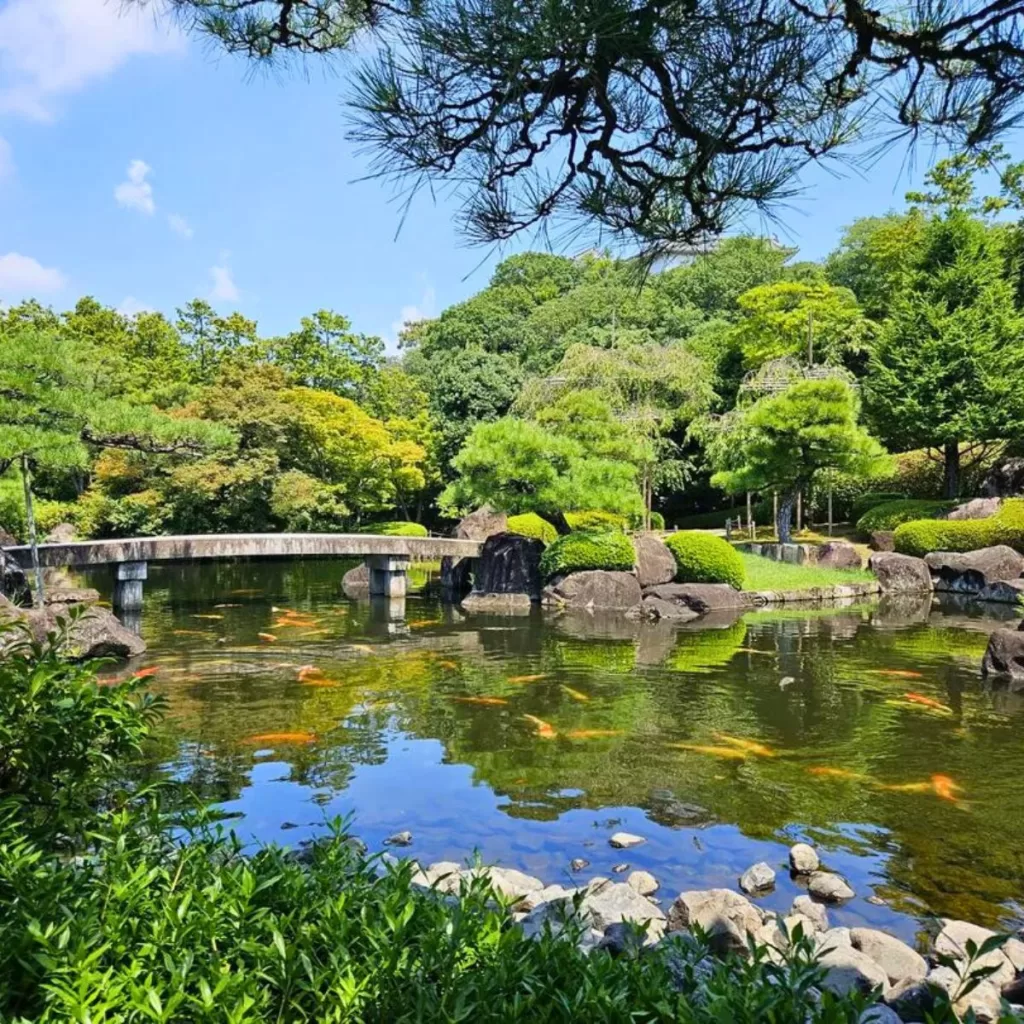
Spread across the base of Himeji Castle, Kokoen Garden recreates the palace gardens that were part of the feudal castle town’s landscape. Opened in 1992, the new traditional garden combines multiple gardening styles from the Edo period. Follow winding paths past a bamboo grove and carp-filled pond representing Kyoto-style design, then admire the meditative rock garden with abstract Zen arrangements.
Other sections replicate a daimyo garden and a lush paradise garden. With its variety of horticultural landscapes and castle views, Kokoen provides scenic strolling just steps from the castle grounds in Himeji.